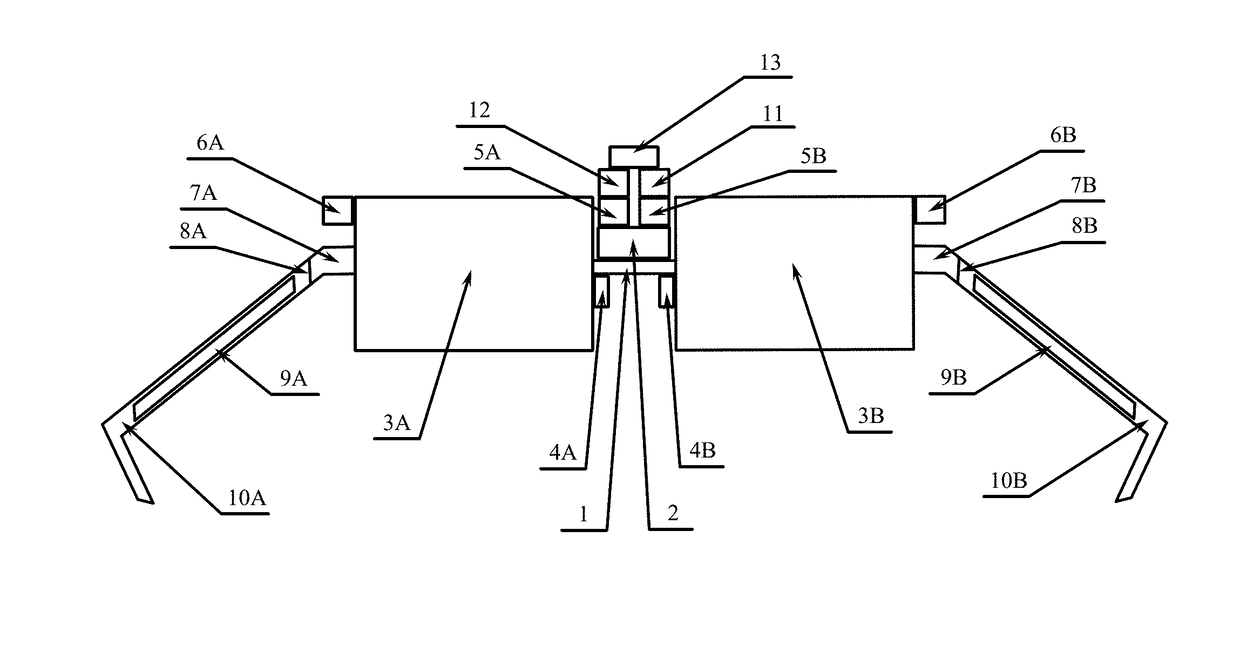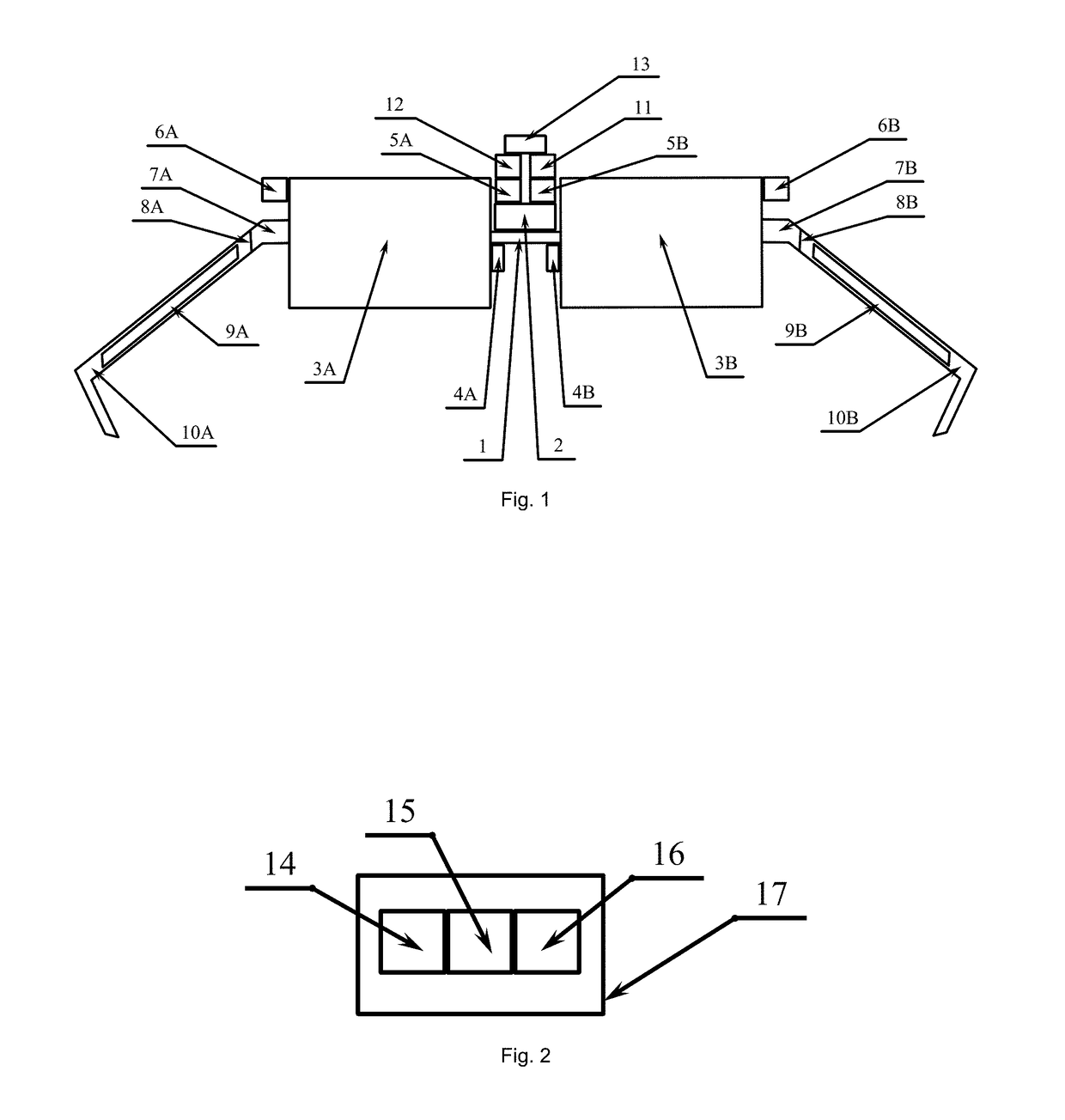Head-operated digital eyeglasses
- Summary
- Abstract
- Description
- Claims
- Application Information
AI Technical Summary
Benefits of technology
Problems solved by technology
Method used
Image
Examples
Example
METHOD OF CARRYING OUT THE INVENTION
[0064]One preferred embodiment for the present invention is provided below, in combination with the attached figures for the description of the present invention.
[0065]Digital eyeglasses embodiment includes two modules: display module and gyro tape. As shown in FIG. 1, the display module includes the following components: nose bridge (1), processor (2), display device (3A), display device (3B), nose pad (4A), nose pad (4B), infrared transmitter (5A), infrared transmitter (5B), infrared receiver (6A), infrared receiver (6B), pile tip (7A), pile tip (7B), hinge (8A), hinge (8B), power supply (9A), power supply (9B), temple (10A), temple (10B), head angular velocity gyroscope (11), torso angular velocity receiver (12), memory (13). As shown in FIG. 2, the gyro tape includes the following components: torso angular velocity gyroscope (14), torso angular velocity transmitter (15), power supply (16), and perspiration-resistant breathable tape (17).
[0066]...
PUM
 Login to View More
Login to View More Abstract
Description
Claims
Application Information
 Login to View More
Login to View More - R&D
- Intellectual Property
- Life Sciences
- Materials
- Tech Scout
- Unparalleled Data Quality
- Higher Quality Content
- 60% Fewer Hallucinations
Browse by: Latest US Patents, China's latest patents, Technical Efficacy Thesaurus, Application Domain, Technology Topic, Popular Technical Reports.
© 2025 PatSnap. All rights reserved.Legal|Privacy policy|Modern Slavery Act Transparency Statement|Sitemap|About US| Contact US: help@patsnap.com



